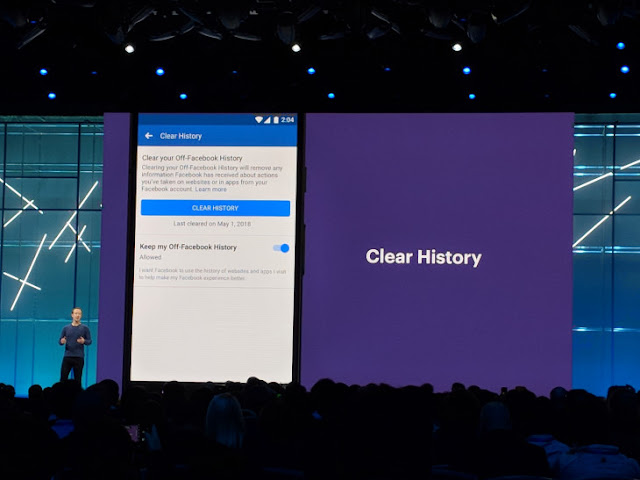A massive company probably has plenty of engineers on staff and the resources to build a complex backbone of interconnected information that can contain tons of data and make acting on it easy — but for smaller companies, and for those that aren’t technical, those tools aren’t very accessible.
That’s what convinced Howie Liu to create Airtable, a startup that looks to turn
what seems like just a normal spreadsheet into a robust database tool, hiding
the complexity of what’s happening in the background while those without any
programming experience create intricate systems to get their work done. Today,
they’re trying to take that one step further with a new tool called Blocks, a
set of mix-and-match operations like SMS and integrating maps that users can
just drop into their systems. Think of it as a way to give a small business
owner with a non-technical background to meticulously track all the performance
activity across, say, a network of food trucks by just entering a bunch of
dollar values and dropping in one of these tools.
“We really want to
take this power you have in software creation and ‘consumerize’ that into a
form anyone can use,” Liu said. “At the same time, from a business standpoint,
we saw this bigger opportunity underneath the low-code app platforms in
general. Those platforms solve the needs of heavyweight expensive use cases
where you have a budget and have a lot of time. I would position Airtable
making a leap toward a graphical user interface, versus a lot of products that
are admin driven.”
Liu
said the company has raised an additional $52 million in financing in a round
led by CRV and Caffeinated Capital, with
participation from Freestyle Ventures and Slow Ventures. All this is going
toward a way to build a system that is trying to abstract out even the process
of programming itself, though there’s always going to be some limited scope as
to how custom of a system you can actually make with what amounts to a set of logic operation legos. That
being said, the goal here is to boil down all of the most common sets of
operations with the long tail left to the average programmers (and larger
enterprises often have these kinds of highly-customized needs).
All this is coming at
a time when businesses are increasingly chasing the long tail of small- to
medium-sized businesses, the ones that aren’t really on the grid but represent
a massive market opportunity. Those businesses also probably don’t have the
kinds of resources to hire engineers while companies like Google or Facebook
are camping out on college campuses looking to snap up students graduating with
technical majors. That’s part of the reason why Excel had become so popular trying to abstract out a lot of complex operations
necessary to run a business, but at the same time, Liu said that kind of
philosophy should be able to be taken a step further.
“If you look at cloud,
you have Amazon’s [cloud infrastructure] EC2, which abstracted the hardware
level and you can build on existing machine intelligence,” Liu said. “Then, you
get the OS level and up. Containers, Heroku, and other tools have extracted
away the operation level complexity. But you have to write the app and modal
logic. Our goal is to go a big leap forward on top of that and abstract out the
app code layer. You should be able to directly use our interface, and blocks,
all these plug and play lego pieces that give you more dynamic functionality —
whether a map view or an integration with Twilio.”
And, really, all these
platforms like Twilio have tried to make themselves pretty friendly to coding
beginners as-is. Twilio has a lot of really good documentation for first-time
developers to learn to use their platforms. But Airtable hopes to serve as a
way to interconnect all these things in a complex web, creating a relational
database behind the scenes that users can operate on in a more simplistic
matter that’s still accurate, fast, and reliable.
“Obviously MySQL is
great if you want to use code or custom SQL queries to interface with the
data,” Liu said. “But, ultimately, you’d never as a business end user consider
using literally a terminal-based SQL prompt as the primary interface to and
from your data. Certainly you wouldn’t put that on your designs. Clearly you
would want some interface on top of the SQL level database. We basically expose
the full value of a relational database like Postgres to the end user, but we
also give them something equally but more important: the interface on the top
that makes the data immediately visible.”
There’s been a lot of activity trying to rethink these sort
of fundamental formats that the average user is used to, but are ripe for more
flexibility. Coda, a startup trying to rethink the
notion behind a word document, raised $60 million, and all this points towards
moves to try to create a more robust toolkit for non-technical users. That also
means that it’s going to be an increasingly hot space, and especially look like
an opportunity for companies that are already looking to host these kinds of
services online like Amazon or Microsoft and have the buy-in from those
businesses.
Liu, too, said that
the goal of the company was to go after all potential business cases right away
by creating a what-you-see-is-what-you-get one size fits all platform — which
is usually called a horizontal approach. That’s often a very risky move, and
it’s probably the biggest question mark for the company as there’s an
opportunity for some other startups or companies to come in and grab niches of
that whole pie in specific areas (like, say, a custom GUI programming interface
for healthcare). But Liu said the opportunity for Airtable was to go horizontal
from day one.








No comments:
Post a Comment